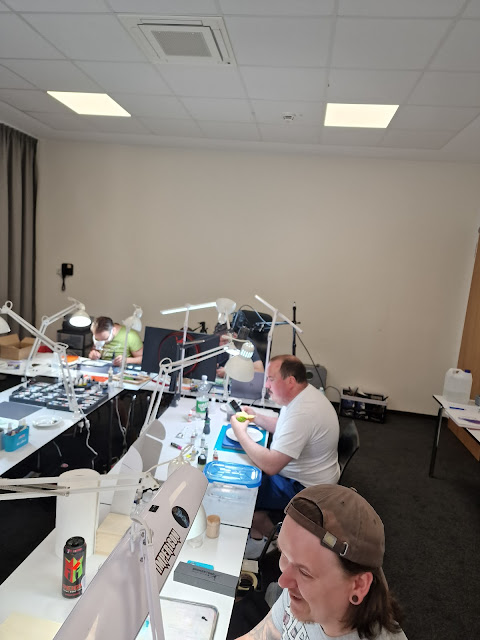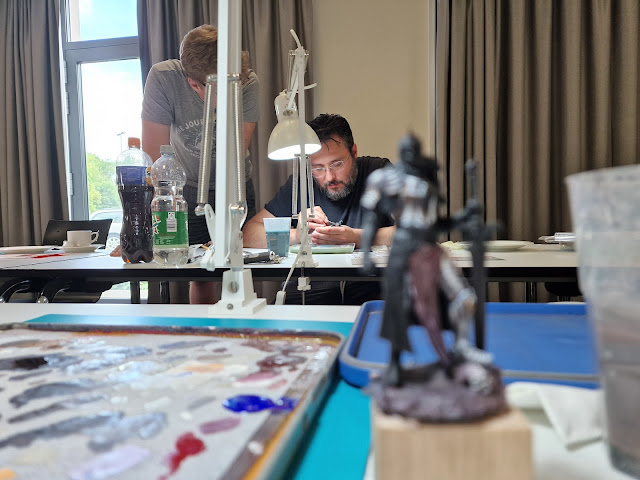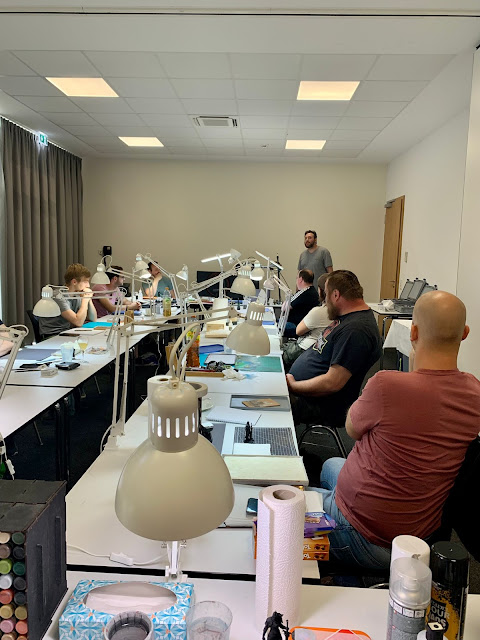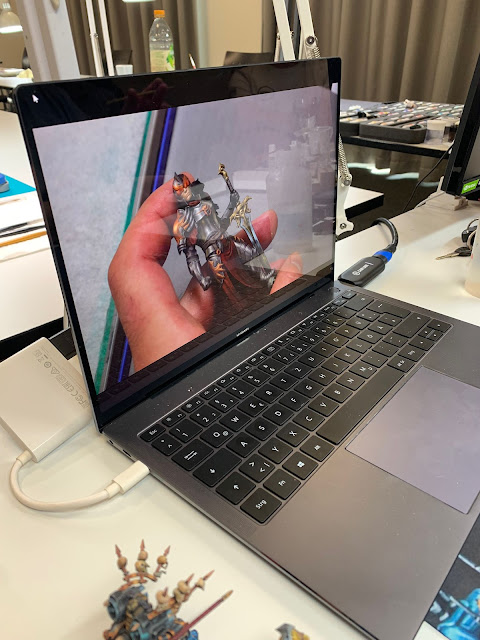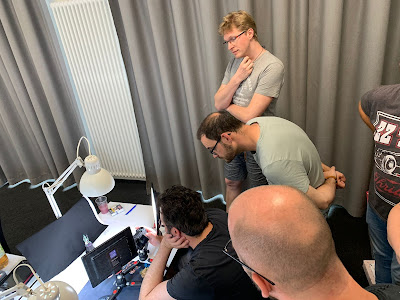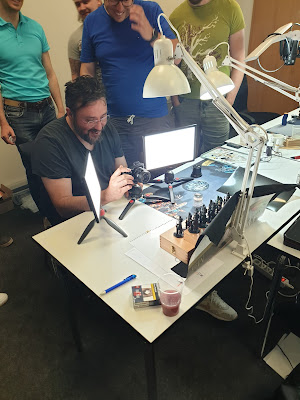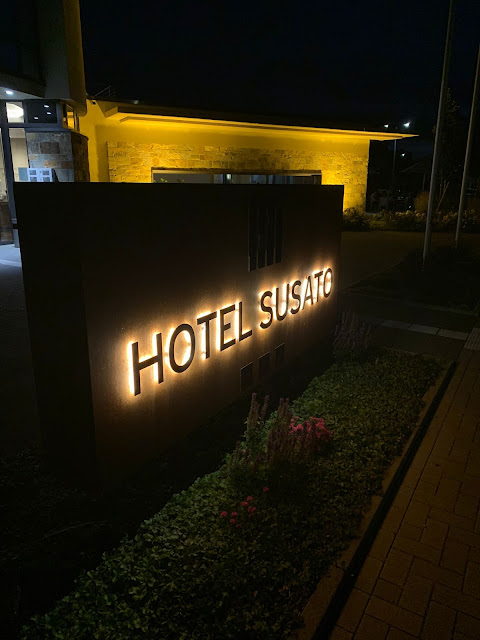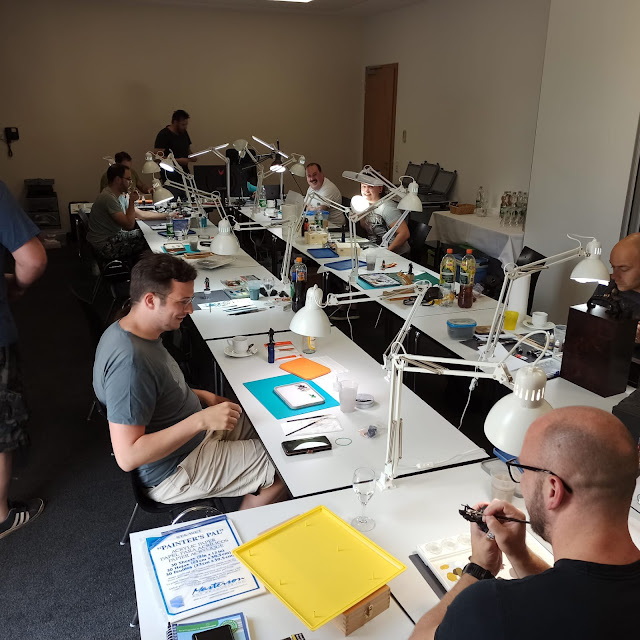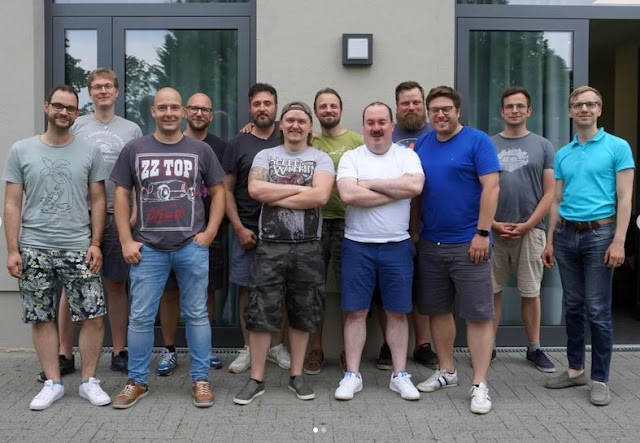Hey all
It's David once again.
Welcome to a quick little tutorial on an easy way to create a banner or flag for your miniatures - this result will be achieved:
 |
WIP of the painting process.
|
As an example I take a banner that I was making for a mini I was painting when I had the idea to draft this little article. The mini is a Knight of St Lazarus holding a standard with the Order's war colors. I'll post nice pics of the finished mini once it's all done. In the meantime, feel free to read a bit on the incredible history of the so called "Leper Knights" over at Wikipedia.
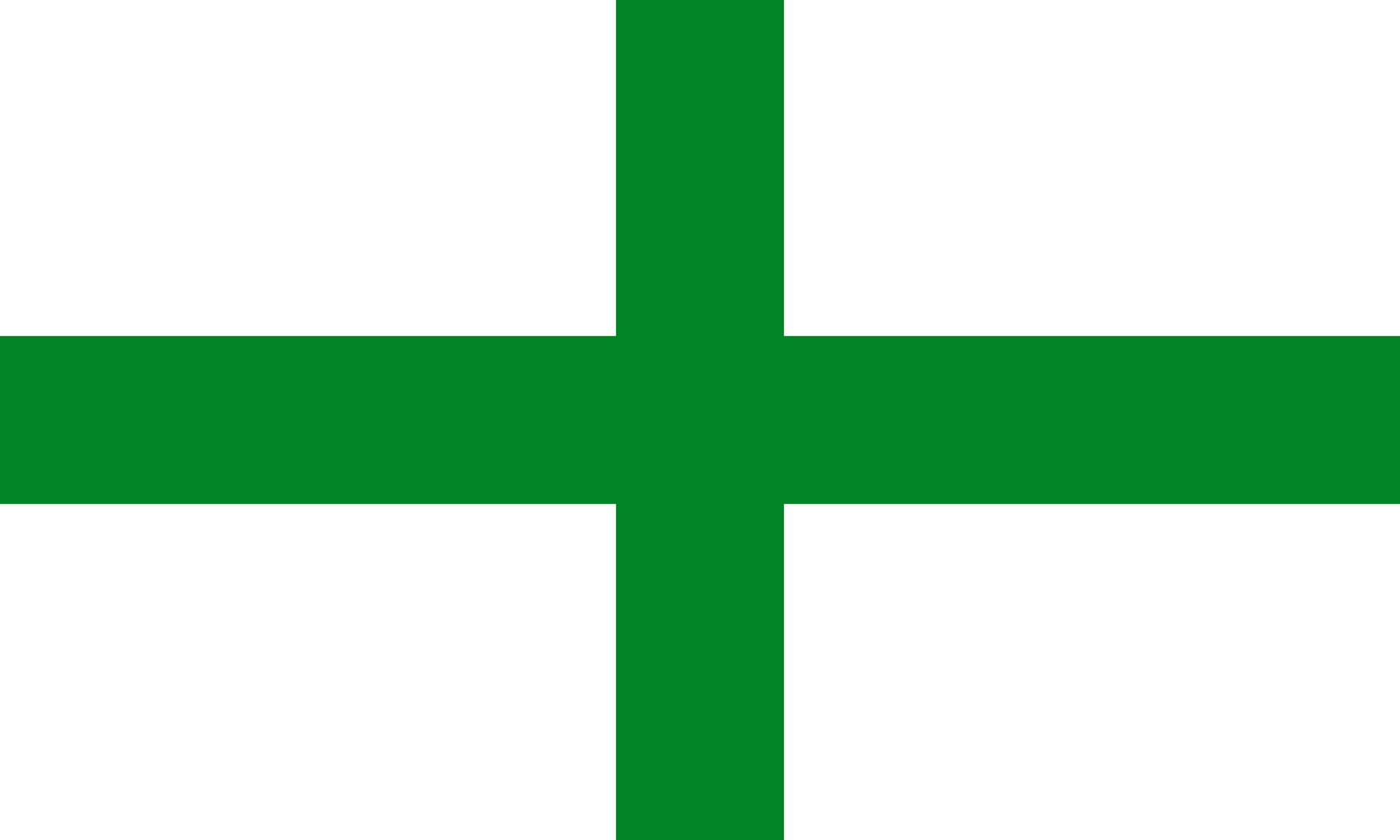 |
The flag of the Order of St Lazarus (Source: Wikipedia)
|
The knights' banner was a simple green cross over white, so, for our little tutorial here, that's a super-easy motive which works well as an example. The approach, however, works very well also for more complex motives, for instance the one below, which is the banner of Duke Otto I of Brunswick, which was made using the exact same procedure, just a bit more color - and lots more hassle ;-).
 |
A little WIP of Otto I's banner made using the same techniques described here.
|
The procedure
All in all, the procedure takes
three basic steps:
- Picking motive, basic shape and size
- Forming the banner
- Final preparation and painting
Step 1: Picking motive, basic shape and size
The absolute first step is, of course, to find a motive. A quick search on the web will provide you with LOTS of inspiration or ready-to-use banners. In this case, I was lucky that my Friend Micha likes playing around with heraldry, so I just asked him whether he had banners for the Knights of St. Lazarus - and indeed he sent me a little pic-file with a few options for my brave knight's standart.
 |
Micha's message :-)
|
Apparently the knights used different crosses over the course of their history - some simple ones, others consisting of the typical v-shape, arrowhead forms. But those were apparently only used in the early modern period, if I get the history right. So, I chose the simplest form: the "Latin cross". Next was deciding on the general shape of the banner. To provide some more interest, I decided to go with a wedged banner - this would bring in some dynamic and an additional bit of variety into the banner. Next, I would print out the banner on simple paper. Since I did not know how big the banner needed to be, I simply copied the pic in multiple different sizes into a word processor-table and printed that out. In this case, because the motive was so simple, I used a simple black-and-white print, but for more complex and colorful motives, you might want to do a color print.
 |
I obviously did not have a good idea which size would look good - so I printed ALL of them.
|
The final thing to do in this step was picking the right size. For that, I cut out some of the print-outs that "looked right" and test-glued them (using UHU all purpose glue) on the lance that was supposed to hold the flag. Then, it was just a little trial-and-error to find which size would be best. It's hard to give precise guidance on how big the flag should be, but I suggest you err a little on the larger side, since the next step - in which we make the flag "move" - gives the flag the impression to be smaller. Once I found the correct size, I carefully removed the glue again. This should be easy if you worked quickly, such that the glue has not completely hardened.
 |
Two of multiple test sizes...
|
 |
... way too small ...
|
 |
... still too small ...
|
 |
... almost there...
|
 |
... now we're talking!
|
Step 2: Forming the banner
The next step would be to form the banner in a way that it looks like "moving in the wind". First, I carefully glued the middle of the banner to the lance with some superglue. Once that was dry, I glued the two banner halves together, using a little thinned-down PVA glue. Then: let the glue dry co.mpletey. I gave it a whole 24h to dry - it's super-important that the glue is totally dry, as for the next steps we do not want the glue to be made liquid again through contact with water.
 |
Lance shaft super-glued to the center-line of the paper-flag.
|
 |
The two halves are joined using PVA-glue.
|
Once the glue was dry, the fun part could start. Using a cheap, rather big synthetic brush, I brushed on some thinned-down mix of water and PVA-glue on the flag. This makes the paper soft and very easy to form - and thanks to letting the previous PVA operation dry down completely, there is no worry that the two halves will separate again...
 |
Ready for some "forming" action. Second flag as a test object.
|
 |
The water-PVA mix is rather thin.
|
Now, it was just a lot of back-and-forth, trial-and-error and working with fingers, tooth-picks, and sculpting tools to bring the banner into the form you like. Again, it's impossible to give exact instructions, as it depends on so many variables, not least the shape you envision the banner to be in the end. In my case, I wanted the banner to be rather limp, indicating only a little air movement - which would be a perfect fit for the scene I had in mind for my brave leper knight: a scorching hot noon somewhere in the "Holy Land" with very little refreshing wind... So, I just played around with the moist paper until I had the form I was looking for - and when I felt that the form was right, I stopped, and let everything dry.
 |
WIP of the flag-forming process.
|
Step 3: Final preparation and painting
Now that the form was right and the first layer of PVA glue was dried, I gave the flag another two or three rounds of water-glue mix brush-ons, each rather thin and very careful to maintain the form and not to disturb the paper surface too much. In between each "round", I would use a blow-dryer to dry the mix. It's not necessary to actually let it dry for 24h as in step 2, above. Just make sure its dry to the touch and be careful when slapping on the next layer not to destroy the previous work. All this is just to strengthen the "form" you created, make the little paper flag more rigid, such that it won't move when you touch it ever-so-slightly, and to protect the paper from the liquid when you start painting it.
 |
Letting stuff dry after the final PVA-layer.
|
As the final step in preparing the flag for painting, I gave it a little "primer", using a few (3-5) layers of AK's ultra-matte varnish. I brushed this on, but you can of course also use an airbrush. This gives a additional protection for the paper underneath, and provides a nice "rough" surface on which to paint.
 |
Important: check how it looks with the whole mini from time to time.
|
Finally, the last thing there is to do is to paint the flag. Here it comes in Super-handy that we printed out the motive, so that we ultimately only need to follow the pattern already there. This helps getting the lines and shapes right when painting the irregularly "moving" flag - and of course especially when painting more complex patterns.
 |
WIP of the painting process.
|
And that's all for today, folks. I'll return with this project to the blog once the whole vignette is done. In the meantime, let me know if you have questions in the comments, below!
Talk to you soon. Best,
D.






